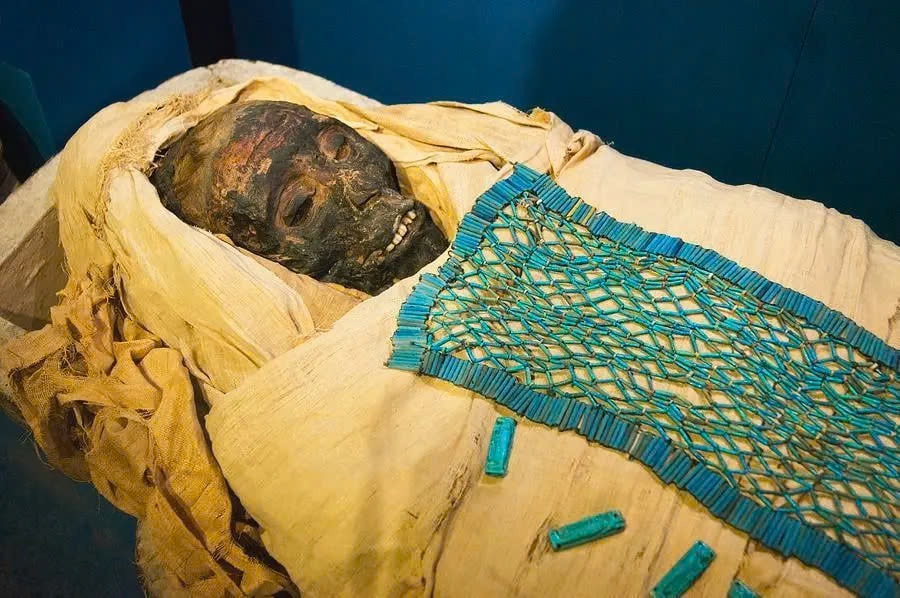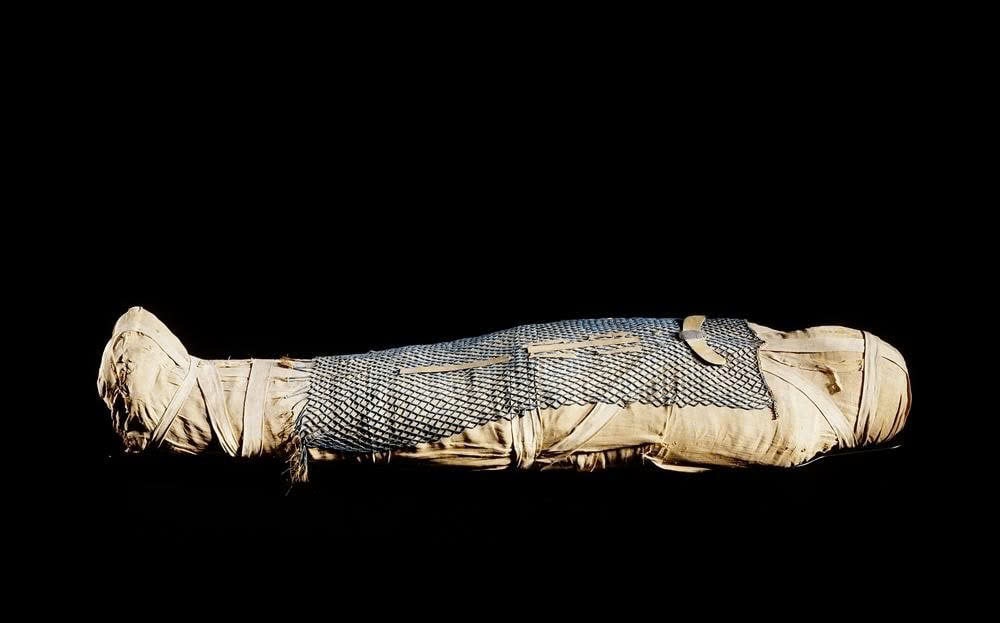The Priest’s Journey Through Time
An Unexpected Discovery
In the halls of Norwich Castle Museum and Art Gallery, a fascinating mystery unfolded. The mummy of Ankh Hor, once thought to be untouched, revealed secrets that spanned millennia. X-rays uncovered modern pins and clips within the ancient wrappings, prompting a re-examination that showed signs of previous exploration.

A Priest of Importance
Ankh Hor, whose name means “life to the god Horus,” was no ordinary individual. A priest of Amun during the 26th Dynasty (ca. 664-525 BC), his well-preserved remains and high-quality casing speak to his significance. The outer coffin, adorned with text and images, depicts gods guiding Ankh Hor on his journey to the afterlife.
Victorian Curiosity and Modern Investigation
A Partial Unwrapping

While the exact reasons remain unknown, evidence suggests that Victorian researchers may have begun to unwrap Ankh Hor before having a change of heart. However, modern experts confirm that this exploration was not comprehensive. Amulets, including model eyebrows and a presumed statue of Osiris in place of the heart, remain undisturbed within the wrappings.
From Royal Collection to Public Display
King George V presented this remarkable artifact to Norwich Castle Museum and Art Gallery in 1928, after it had resided at Sandringham. The mummy’s journey from ancient Egypt to the United Kingdom adds another layer to its intriguing history.
Mummification in the 26th Dynasty
Preserving Tradition

During Ankh Hor’s time, mummification remained a crucial aspect of Egyptian funerary practices. The process, similar to earlier dynasties, involved organ removal, body desiccation using natron, and meticulous wrapping in linen bandages. These rituals reflected the enduring belief in the afterlife and the importance of preserving the physical form.
A Window into Ancient Beliefs

The mummy of Ankh Hor provides a tangible link to the cultural and religious convictions of ancient Egypt. Originally interred in the Tomb of Ankh Hor (TT414) in El-Assasif, West Thebes, this priest’s remains now offer visitors to Norwich Castle a glimpse into a civilization’s eternal quest for immortality.

